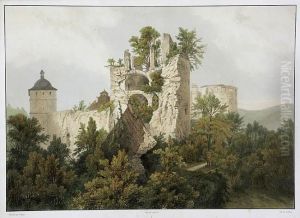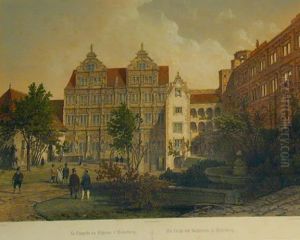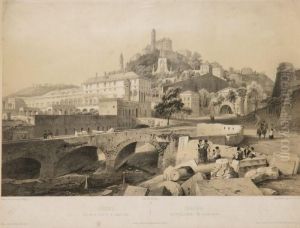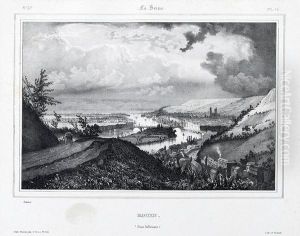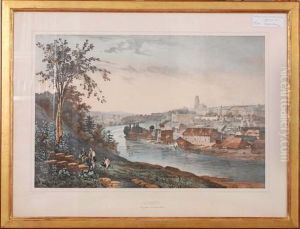Louis Philippe Al. Bichebois Paintings
Louis Philippe Alphonse Bichebois was a notable French lithographer born in the early 19th century, specifically in 1801. His contributions to the field of lithography, particularly in the realm of architectural and landscape views, positioned him as a significant figure in the art world during his time. Bichebois’ work is often celebrated for its precision and attention to detail, qualities that stem from both his talent and the burgeoning lithographic techniques of the era.
Bichebois' career flourished in a period when lithography was becoming a popular medium for reproducing artworks, thanks in part to its ability to capture details with a clarity not found in earlier reproduction methods. This was a time of great technological and artistic advancements in Europe, and France was at the forefront of these developments. Bichebois trained under prominent artists and lithographers, which helped him hone his craft and develop a distinctive style characterized by its accuracy and aesthetic appeal.
Throughout his career, Bichebois focused on architectural subjects, producing works that not only served as artistic expressions but also as valuable records of architectural heritage. His lithographs often depicted famous French buildings and monuments, as well as landscapes, capturing the romantic spirit of the era. These works were widely disseminated, contributing to Bichebois' reputation among architects, historians, and art collectors.
Unfortunately, Louis Philippe Alphonse Bichebois' life was relatively short; he died in 1850. Despite his premature death, his body of work left a lasting impact on the field of lithography and the documentation of architectural history. His lithographs continue to be appreciated for their beauty and historical value, offering insights into the architectural and landscape visions of 19th-century France.
